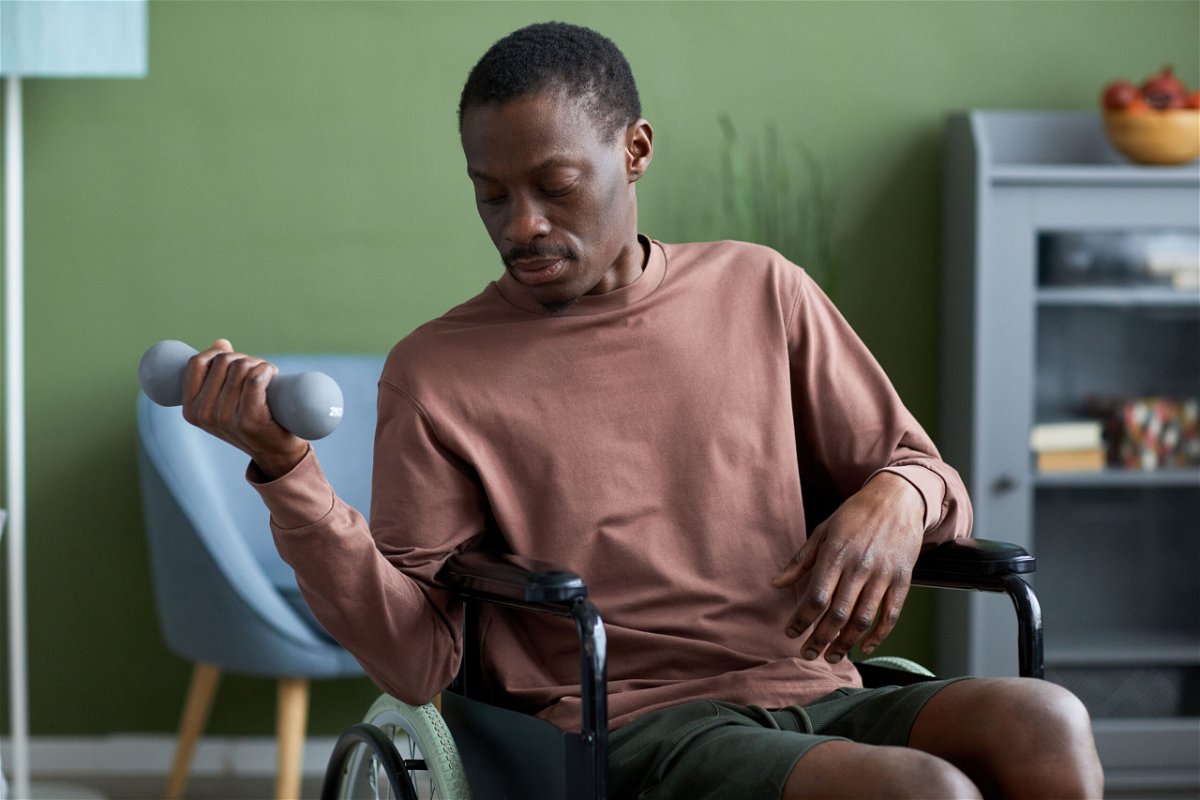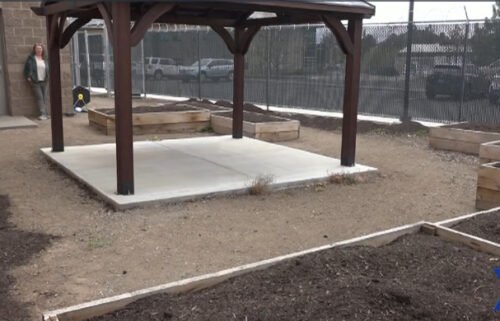How to exercise when you have a chronic condition or a disability

Incorporate muscle-strengthening exercises into your routine two or more days per week.
By Melanie Radzicki McManus, CNN
Many people struggle to maintain a regular workout regimen. Add in a disability, chronic condition or injury, and it can be even more challenging to incorporate exercise into a weekly routine. Yet it’s important to do so.
Adults with disabilities are three times more likely to develop serious health conditions such as heart disease, stroke, diabetes and cancer than those without disabilities, according to the US Centers for Disease Control and Prevention. While the impact of these health conditions can be lessened or possibly even avoided with regular aerobic exercise, nearly half of adults ages 18 to 64 with a disability are not engaging in any, the CDC says.
“Regular exercise can provide many benefits for people with disabilities, including improved overall health, increased strength and endurance, better mobility, and improved mental health,” said Lalitha McSorley, owner and lead physical therapist at Brentwood Physiotherapy Clinic in Calgary, Alberta.
Regular exercise can also help manage the symptoms associated with some disabilities. For example, exercise can reduce the pain and stiffness that often accompanies arthritis, and it can improve cognitive function in people with cognitive issues, she said. Additionally, a consistent workout routine can boost self-esteem and provide valuable socialization and community engagement.
In 2020, the World Health Organization released the first global public health guidelines regarding physical activity for those with disabilities and chronic conditions, including diabetes, hypertension and cancer. These guidelines are the same as the US Physical Activity Guidelines for Americans for all adults: Every week you should do at least 150 to 300 minutes of moderate-intensity aerobic exercise, 75 to 150 minutes of vigorous-intensity aerobic physical activity or an equal combination of both. In addition, you should perform muscle-strengthening activities two or more days per week.
Exercises to consider if you have limited mobility
Which types of exercise are appropriate and helpful will depend upon your specific health situation. In general, some good options are swimming, walking, water aerobics, cycling and seated workouts, said Bishnu Pada Das, a certified personal trainer based in Kolkata, India. Examples of seated workouts include using a hand cycle and performing chair exercises with or without weights.
Chair exercises can be as simple as power punches in which you punch your arms in front of you in an alternating fashion, Das said, or alternating kicks, which involve holding your chair for support, then alternating leg kicks. Even torso rotations are beneficial, twisting from side to side and using your arms to help with the rotations.
Activities such as water aerobics and pool running are favored by Dr. Heather Swain, a physical therapist at Ally Total Physical Therapy in Toledo, Ohio. “The reduced gravity with aquatic exercise helps people to be more mobile,” Swain said. “It can be empowering to see your body move and accomplish movements you couldn’t outside of the water.” The hydrostatic pressure of the water also helps enhance blood flow and reduces inflammation.
If you don’t have easy access to a pool, Swain considers yoga a great, and often underrated, option. Yoga can help maintain flexibility and balance, no matter your skill level, which reduces your risk of injury, she said. In addition, the breath work involved benefits pelvic health, back pain, cognitive function and mental health.
Movement helps relieve joint stiffness
Those with joint issues may benefit more from isometric exercises in which you tighten a certain muscle or muscle groups. Think exercises such as planks, squats and wall sits. Isometric exercises help maintain muscle strength while preventing further muscle deterioration.
If you have lower-body issues or are unsteady on your feet, chair aerobics are a good choice. Using rapid, repetitive motions, such as doing bicep curls or marching in place, chair aerobics workouts can loosen stiff joints while boosting your heart rate. Adding in dumbbells or resistance bands incorporates strength training, too. Performing chair yoga, or even stretching throughout the day, aids in flexibility and can help reduce the pain and muscle pressure that can come when you sit for long periods of time.
No matter what form of exercise you decide on, several factors can help ensure your success. Schedule your workouts for the time of day you tend to feel best, said certified personal trainer Kelly Borowiec, founder of Keebs Fitness in Saratoga, California. It also helps to make sure you’re as comfortable as possible while exercising.
“If you struggle with arthritis, increase the room temperature where you’ll be exercising,” said Borowiec, who has extensive experience working with clients who have disabilities or long-term injuries. “Set goals, too, as having a physical disability doesn’t mean you can’t make progress. And focus on what you can do, rather than what you can’t do.”
Swain agreed. “It can be easy to focus on your limitations,” she said. “Exercising can remind you of what your body can do, and can give you a sense of empowerment and accomplishment that is valuable to your self-efficacy.”
The-CNN-Wire
™ & © 2023 Cable News Network, Inc., a Warner Bros. Discovery Company. All rights reserved.
Sign up for CNN’s Fitness, But Better newsletter series. Our seven-part guide will help you ease into a healthy routine, backed by experts. Melanie Radzicki McManus is a freelance writer who specializes in hiking, travel and fitness.



